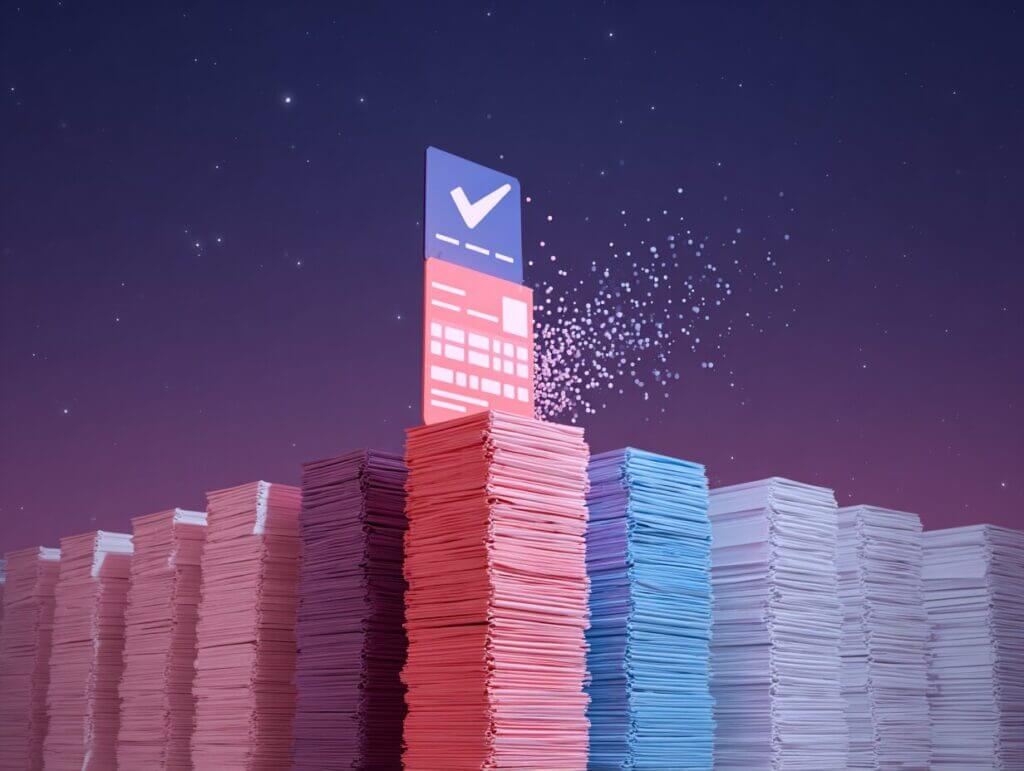How to Automate License Verification for Nursing Staff Across Multiple States


Managing the licenses of nursing staff who work across multiple states can feel like an endless puzzle. Each state has its own set of regulations and keeping track of who holds what certification. When it expires, it all can quickly become overwhelming. Automating this process not only simplifies the workload for HR and compliance teams, but it also ensures that your staff stays compliant, regardless of where they’re working.
The Importance of License Compliance in Healthcare
Licensing is a crucial component of healthcare compliance. Nurses, as well as other healthcare professionals, must hold valid licenses in every state they practice. Whether it’s a Registered Nurse (RN), Nurse Practitioner (NP), or Licensed Practical Nurse (LPN/LVN), appropriate licensure is not just a regulatory requirement. It is a matter of patient safety and organizational integrity.
When your healthcare organization fails to track employee licenses, it risks fines, operational disruptions, and potentially dangerous errors. When you employ nurses that are operating across multiple states, with varying licensing requirements, things can easily escalate for your organization. This is why automated license verification is the best solution to consistently monitor certifications, reducing human error and preventing compliance gaps.
Challenges of Tracking Nursing Licenses Across Multiple States
Nurses who work across different states or travel between locations face a unique set of challenges when it comes to maintaining valid licenses. They’re required to hold valid credentials in their home state, and may also need additional licenses to practice in other states.
Local, State, and Federal Licenses
Are you managing nursing licenses across multiple states? Then it becomes crucial for you to understand the different layers of licensure required at local, state, and federal levels. Each level of licensure has specific requirements and plays a key role in ensuring that nurses are qualified to provide safe and effective care.
State Licenses: The Primary Requirement
State nursing licenses are the most common form of licensure that nurses are required to hold. Each state has its own nursing board or regulatory body that sets the standards for licensure, renewal, and scope of practice. Nurses must meet the specific requirements of the state in which they wish to practice, which can include education, examinations, continuing education, and background checks.
Example: California
California has one of the most stringent nursing licensure processes. Nurses must pass the NCLEX-RN (National Council Licensure Examination for Registered Nurses), complete a criminal background check, and provide proof of graduation from an accredited nursing program. California is unique in that it does not currently participate in the Nurse Licensure Compact (NLC), meaning nurses who wish to practice in California must obtain a separate license for the state, regardless of whether they hold a license in another NLC state.
Example: Texas
Texas, on the other hand, is part of the Nurse Licensure Compact (NLC), which means that nurses who are licensed in one compact state can practice in other compact states without needing to apply for additional licenses. Texas’s licensing requirements include passing the NCLEX-RN, providing proof of graduation, and completing a criminal background check. Nurses also need to renew their license every two years, with the requirement to complete 20 hours of continuing education as part of the renewal process.
Local Licenses: Additional Requirements Based on Geography or Employment Setting
In some cases, local or city-specific licenses may be required for nurses, particularly in large metropolitan areas or specialized healthcare settings. Local licenses may be specific to a region within a state, and while they are not as common as state licenses, they can add complexity to the process.
Example: New York City
In New York City, healthcare professionals may need to obtain additional local licenses or certifications, especially when working in specialized areas such as mental health or community health. These local regulations ensure that nurses have met the city’s specific requirements, which may vary slightly from the broader state requirements. Nurses working in New York City must also comply with the state’s requirements for licensure, adding an extra layer of paperwork and compliance for HR departments.
Federal Licenses: A Complex and Specialized Category
While most nurses are required to hold state licenses, federal licensing or certification is also needed in specific healthcare settings. Nurses working in federal agencies or government-owned healthcare facilities, such as the U.S. Department of Veterans Affairs (VA), the military, or other federal programs, may be subject to additional federal regulations. These licenses ensure that nurses meet the standards set by the federal government for working with specialized populations, such as military personnel, veterans, and federal employees.
Example: Military Nursing Licenses
Nurses who wish to serve in the U.S. military or as civilian nurses for military services must meet specific federal requirements that differ from state licensure standards. Military nurses must have a valid nursing license from any state in the U.S. and then apply for additional certification through the federal government. They also undergo rigorous training specific to the military context, which is separate from regular state licensure. The U.S. military uses its own system for credentialing and monitoring the licenses of its nurses, which complicates the tracking process for organizations that have military contracts.
Challenges with Multi-State and Multi-Jurisdictional Compliance
The key challenge with tracking state, local, and federal licenses is ensuring compliance across multiple jurisdictions.
- With different renewal cycles, varying continuing education requirements, and differing standards, it’s easy for HR professionals and compliance officers to fall behind or overlook necessary actions.
- Managing nursing licenses across several states can quickly become cumbersome when the tracking system isn’t streamlined or automated. For example, a nurse working in Texas and California needs to track two separate licenses, potentially with different renewal periods and educational requirements. Additionally, those working in high-demand areas like New York City or Washington D.C. may have additional local certifications to manage.
Other pain points include:
Time-Consuming Manual Processes
Without automation, compliance officers spend hours confirming licenses, contacting state boards, and updating records. The manual nature of these tasks increases the risk of errors and wastes valuable time.
Inconsistent and Dispersed Data
Data on nursing licenses is often scattered across spreadsheets, emails, and state databases. Accessing this information from different platforms creates inefficiencies and can lead to mistakes.
Employers need a centralized, automated system to ensure they are aware of upcoming expirations, required continuing education, and any changes in regulations across all jurisdictions. Failure to manage licenses across local, state, and federal levels increases the risk of non-compliance.
Nursys: A National Database for License Verification
Nursys is a key resource for verifying nursing licenses, offering a national database of licensed nurses in the U.S. This system allows your HR and compliance teams to quickly access verified information about a nurse’s credentials.
However, while Nursys simplifies the process of verification, it’s important to note that not all states participate in the system. This means that for nurses working in states outside the Nursys network, manual verification may still be necessary.
Nursys also enables ongoing monitoring, so employers can keep track of renewals and disciplinary actions. This makes it easier to stay on top of changes without manually checking each nurse’s licensure status every few months.
How Automation Helps Manage Multi-Level License Tracking
License verification software is designed to manage the complexities of local, state, and federal licensure in a way that ensures compliance while reducing administrative burden. By automating the tracking process, businesses can:
- Streamline Record-Keeping
All licenses, renewals, and certifications are stored in one centralized platform, reducing the risk of human error and data inconsistencies. - Real-Time Alerts for Expiration Dates
Automated reminders notify HR teams well in advance of upcoming license renewals, helping ensure that no nurse is working with an expired certification. - Reduce Compliance Risks
By tracking all licenses and certifications across states, local jurisdictions, and federal requirements, businesses can ensure they are always compliant, preventing costly penalties or lapses in service. - Improve Decision-Making
Having a comprehensive, up-to-date record of all nursing licenses makes it easier to allocate resources, plan staffing needs, and ensure that the necessary qualifications are in place for each role.
How to Get Started with License Verification Automation
Adopting automation for license verification may seem like a big step for your business. Keep in mind, however that it’s an investment that pays off quickly and the benefits are huge.
Here are a few steps to help you get started:
- Choose the Right Software.
Look for software that integrates with your existing systems, provides real-time updates, and supports the specific needs of your multi-state nursing workforce. Make sure it offers automatic alerts, centralized record keeping, and easy integration with state boards and Nursys. - Set Up a Centralized Database.
Make sure that all nursing licenses are stored in a secure, easily accessible platform that can be accessed by HR and compliance teams in real time. - Train Your Team.
Training your HR and compliance teams to use the software effectively is crucial. Provide ongoing support to help them navigate any challenges and ensure the system is being used to its full potential. - Monitor the Process and Improve as You Go.
Regularly review your processes and software performance to ensure it’s helping you stay compliant. Continuously adjust and improve workflows as needed.
Simplify License Management and Ensure Compliance
By embracing technology, you not only stay ahead of compliance requirements, but you also foster a more efficient, proactive, and organized HR department. It’s time to move beyond manual tracking and leverage automation to manage licenses with ease and confidence.





































